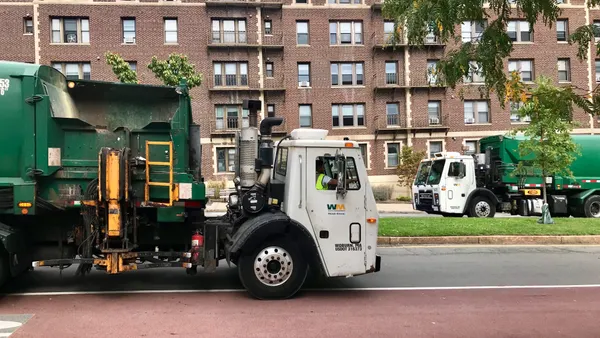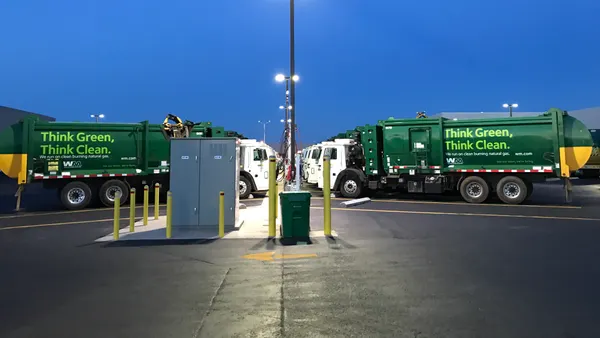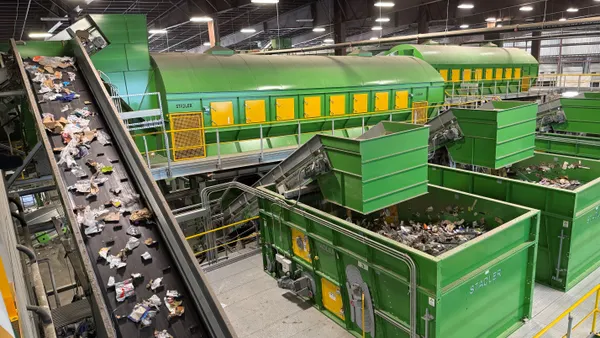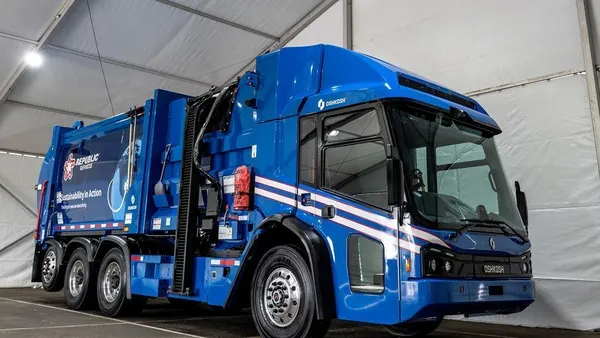Dive Brief:
- Phoenix Public Works recently announced that the FY17 citywide diversion rate was 30%, a 10% jump from the prior year. This update was delivered as part of a report to the Phoenix City Council's Transportation and Infrastructure Subcommittee that also outlined multiple areas of progress toward reaching the Reimagine Phoenix goal of 40% diversion by 2020.
- This statistic includes the 400,000 households serviced by municipal collection and a range of local government facilities. The growth was attributed to diversion activity at some city departments being counted for the first time, a new biosolids program, additional airport recycling, nine new recycling drop-off stations with only a 3% contamination rate, increased participation in the Recyclebank rewards program and a range of other efforts.
- Earlier this week, the Arizona Capitol Times reported that under 4% of the 158,000 eligible households were participating in the city's curbside yard waste pilot. Public Works Director Ginger Spencer told Waste Dive that number was expected to change and noted that participation in the city's curbside recycling program, which services 400,000 households, was at 86.5%.
Dive Insight:
Since the Reimagine Phoenix initiative was launched in 2013, the Public Works Department has become as experimental and innovative as many of its big city peers. This started with the 2020 goal and was expanded in 2016 to include a goal of "zero waste" by 2050. After reporting a 16% diversion rate for FY15, the city has already made notable progress.
In addition to the many projects listed in the new council report, the city has teamed up with Cisco for a waste "hackathon," partnered with Arizona State University to launch a waste-focused incubator, taken steps to recognize commercial recyclers and plenty more. As explained to Waste Dive, finding ways to avoid the $17 per ton it costs to take waste to the local landfill is only part of the equation. Spencer said every decision is driven by a triple bottom line approach for social, environmental and financial benefits. The fact that Phoenix owns the landfill also helps — Spencer said that gives the city more options for being sustainable and trying to keep costs down for ratepayers.
A previous waste characterization study helped give the Public Works Department a better sense of where to focus their attention on preserving that landfill capacity. Yard waste came out on top, comprising 30%, compared to standard recyclables and food waste at 15% each. This was a factor in the city's decision to build a new $13.3 million composting facility to handle the material. The finished compost is then used in city parks, reducing costs and replacing turf in some instances.
Since the composting facility opened in April, the city has been looking at ways to get more material to it. Spencer said she has noticed a lot of yard waste included in bulk collection piles, a program which is currently under review. This behavior, and the fact that residents and landscapers can also drop off material directly, may have something to do with the 4% participation rate that received attention in local media earlier this week.
Residents who want to participate in the curbside pilot have to pay an additional $2 per month — the program costs $5, but switching to a smaller refuse cart saves them $3. Participation counts for points in the Recyclebank program, which can also lead to financial savings. Expansion is on the table, but will require additional resources, so all options are being evaluated. Engagement was found to be higher in one test neighborhood where residents had to opt out rather than opt in — similar to Boise, ID's curbside organics program — so that is being considered for the full program. Because yard waste is such a large portion of the waste stream, Spencer said it would remain a top priority citywide, however the program evolves.
"That's kind of the low hanging fruit. That's how we're going to get to 40%," she said. "From our standpoint it just makes sense. It's cheaper than sending it to a landfill and also it could be repurposed."














